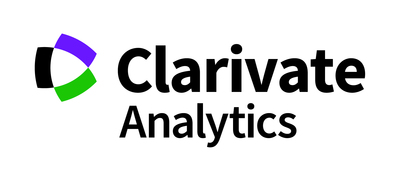Clarivate Introduces New Open Access Data into Web of Science Journal Citation Reports

 |
Increasing transparency through rich insights into the contribution of open access content to scholarly journals
LONDON and PHILADELPHIA, April 23, 2020 /PRNewswire/ — Clarivate Analytics (NYSE: CCC) today announced the addition of open access data to the Journal Citation Reports profile pages to increase transparency around open access models in scholarly publishing. The Journal Citation Reports is an annual journal report from the Web of Science, the world’s largest publisher-independent global citation database.
The new data show each journal’s articles by access model. This provides the research community with transparent, publisher-neutral information about the relative contribution of articles published free to read and re-use under Creative Commons licenses (‘gold open access’) to a journal’s overall volume of content and citations. The new feature is in beta until the launch of the 2020 Journal Citation Reports in June.
For the approximately 5,200 hybrid journals in the Journal Citation Reports, readers will now quickly and easily be able to identify:
- the number of papers published via the traditional subscription model, and
- those published via Creative Commons licenses.
The research publishing landscape is undergoing rapid change, disrupting the longstanding dominance of the subscription model and replacing it with open access models. Both funders and publishers are looking to improve transparency of open access, with publishers under increasing pressure to eliminate or shorten embargoes, improve open access options, and to ‘flip’ traditional subscription or hybrid journals to make all research articles freely accessible and re-usable upon publication via a Creative Commons license.
Dr. Nandita Quaderi Editor-in-Chief of the Web of Science said: “This is the latest initiative in a long line of actions Clarivate has taken to support open research. When Dr. Eugene Garfield published the first Journal Citation Reports in 1975, all journals were printed and open access did not exist. How journals are published and accessed has changed, but the purpose of the Journal Citation Reports remains the same: to provide a rich set of data to help the research community better understand a journal’s contribution to the literature and influence on scholarly discourse.
“Introducing additional open access data into the Journal Citation Reports from the Web of Science will help us all understand the impact of research published via gold open access. With the additional data provided, funders and publishers will be able to make better informed, more confident decisions on open access policy and strategy, furthering their objectives of increasing transparency around open access to academic research.”
Researchers are increasingly interested in open access publishing. Including descriptive open access data in the Web of Science Journal Citation Reports allows researchers to quickly and easily view the amount of gold open access content (if any) in their preferred journal and see how it contributes to the overall citation performance of the journal. It also enables them to monitor community norms in their research discipline by viewing the extent to which their peers are making articles available via gold open access options. This information could also help publishers make data-driven decisions on when/whether to ‘flip’ journals from a subscription or hybrid model to fully open access.
Libraries have many competing demands on their time – negotiating transformative agreements with publishers, educating faculty and students, and tracking evolving policies from multiple stakeholders. The new descriptive data enables them to quickly understand the relative contribution of open access articles to a journal’s overall volume of content and citations, help patrons comply with funder open access mandates, and dispel myths about open access with visualizations that show how reputable journals offer open access.
For more information visit the blog
Current subscribers can access the Journal Citation Reports through our website
Example of how the new descriptive data are featured within the Journal Citation Reports:
Media Contact
Amy Bourke-Waite, Director of External Communications
Amy.bourkewaite@clarivate.com
Notes
This is the latest initiative in a long line of actions from the Web of Science to support open research. We support open research by:
Web of Science was the first citation database and discovery platform to ensure our customers could easily access peer-reviewed OA papers by embedding OA data.
We believe our data is the best combination of robust OA data and careful editorial curation, helping to avoid pitfalls such as researchers being steered to predatory publishing activities (with the free-to-use Master Journal List being a safe entry point for millions of researchers every year). Because some citation databases exclude Green OA and/or lack stringent selection criteria, the Web of Science remains the only citation database that comprehensively covers editorially controlled and versioned OA.
About the Web of Science
The Web of Science, part of Clarivate, organizes the world’s research information to enable academia, corporations, publishers and governments to accelerate the pace of research. It is the world’s largest publisher-neutral citation index and research intelligence platform. Its many well-known brands also include Converis, EndNote, Kopernio, Publons, ScholarOne and the Institute for Scientific Information. For more information, please visit https://clarivate.com/webofsciencegroup/.
About Clarivate
Clarivate™ is a global leader in providing trusted insights and analytics to accelerate the pace of innovation. We have built some of the most trusted brands across the innovation lifecycle, including the Web of Science,™ Cortellis,™ Derwent,™ CompuMark,™ MarkMonitor™ and Techstreet.™ Today, Clarivate is on a bold entrepreneurial mission to help customers reduce the time from new ideas to life-changing innovations. For more information, please visit clarivate.com.
Forward-Looking Statements
This press release and oral statements included herein may contain forward-looking statements regarding Clarivate. Forward-looking statements provide Clarivate’s current expectations or forecasts of future events and may include statements regarding results, anticipated synergies and other future expectations. These statements involve risks and uncertainties including factors outside of Clarivate’s control that may cause actual results to differ materially. Clarivate undertakes no obligation to update or revise the statements made herein, whether as a result of new information, future events or otherwise.


